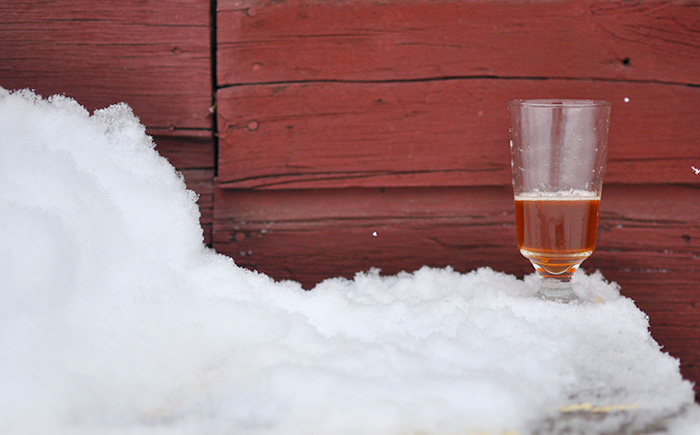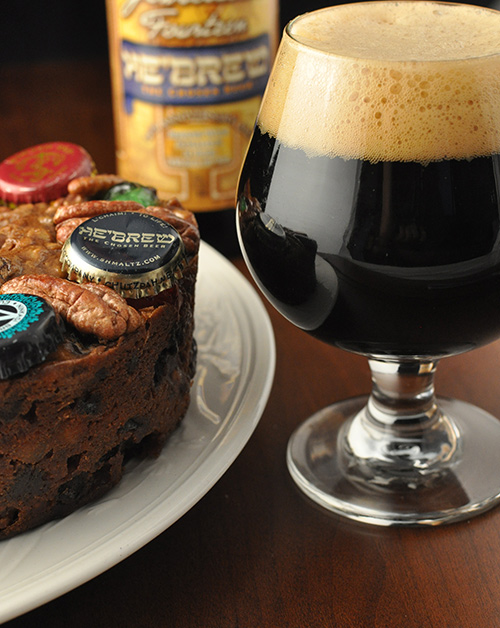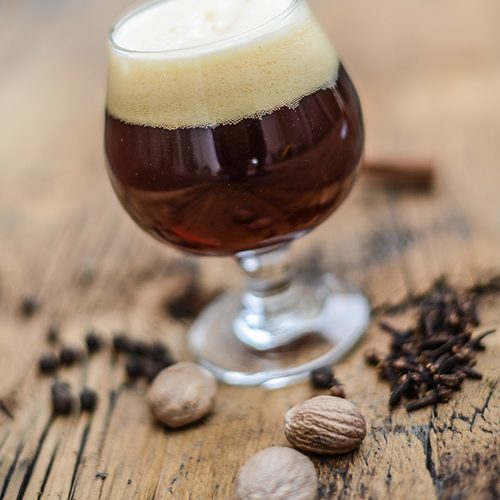During their annual “First Pour” event in late October, the staff at Great Lakes Brewing Co.’s brewpub in Cleveland poured 430 pints of Christmas Ale every 60 minutes for 12 consecutive hours. That’s one pint every eight seconds.
While those gaudy numbers might suggest an attempt to break some obscure world record, the clamor for Christmas Ale was simply a reflection of Ohioans’ adoration for the seasonal spice beer.
“It’s our second-biggest seller, and it’s only available eight weeks out of the year,” says Marissa DeSantis, communications specialist for GLBC. “The only beer that sells more than that is our flagship Dortmunder Gold lager, which is available year-round. So it’s pretty big for us.”
Indeed, winter spice beers produced by America’s small and independent brewers embody the spirit of the holiday season, with flavors of cinnamon, ginger and everything in between.
And folks go crazy for them.
Down in Asheville, N.C., Highland Brewing Co. unveils the iconic Cold Mountain Winter Ale each November just before Thanksgiving, and for the entire month it’s the talk of the town. Fans skip work on Cold Mountain Monday to raid area stores for the spiced amber brew, emptying shelves within hours or even minutes. Local bars tapping the beer are typically filled to capacity. And the release party at the brewery—which was expanded to a four-day event this year—has become so popular that Highland established a shuttle service from a nearby shopping center to accommodate the thousands who swarmed the brewery for the first taste.
So why all the fuss? Let’s open up the kitchen cabinet and discover why, when it comes to holiday beers, variety is the spice of life.
The Rich History of Spice Beer
Herbs, spices and other flavorings have found their way into beer throughout the history of brewing. They served as beer’s bittering and flavoring agents before the use of hops became widespread around the 13th century.
As GLBC points out in its brand fact sheet for Christmas Ale, the tradition of holiday beers began in the Middle Ages when spices were commonly used instead of hops to add flavor and medicinal qualities to beer. According to GLBC, the style re-emerged in the early 1900s in the northern countries of Western Europe when local brewers began creating specialty holiday brews for their favored patrons.
Today, holiday spice beers generally fall into one of two groups: those that incorporate the same recipe year after year, and those that are annually tweaked—their exact recipe kept secret.
Cold Mountain, and the beer that inspired it, Anchor Brewing’s Christmas Ale, are examples of the latter. John Lyda, vice president and brewmaster at Highland, has experimented with many ingredients for Cold Mountain over the years since its inception in the late 1990s, always searching for that magical melding of holiday flavors.
Ditto for Anchor. Celebrating 40 years in 2014, Anchor’s Christmas Ale is among the oldest and most revered of all U.S. holiday beers—though the recipe is constantly evolving.

“Our first spiced ale was in 1987, and over the years we’ve tried a number of spices,” says Anchor brewmaster Mark Carpenter. “Every year we sit down and talk about what we think we can do to make it better next year.”
This year Carpenter made some more noticeable changes to Christmas Ale than in the past, as the brewery aims to perfect a particular style of darker spiced ale. The 2014 version features aromas of citrus fruit, spices and subtle piney hop notes, while the flavor has a “sarsaparilla-like sweetness” with rich caramel maltiness and a pleasantly balanced back-end bitterness.
Carpenter says his staff has always used a number of different spices in the beer, adding them at various phases of the brewing process from the mash to the kettle to the cellar, and the order varies year to year. “This year, some things that we were aging in the cellar we moved to the kettle because I wanted to see what the difference would be,” he says. “So it’s really just an experiment every year.”
Part of the fun is reaching beyond traditional holiday spices. “It should have a nice holiday spice flavor to it, but hopefully we’ve incorporated things that one might not necessarily think of,” Carpenter says. And that’s why Anchor is mum about the Christmas Ale recipe—the company keeps even the malt and hop bills “top secret.”
“I mean, I could tell you the recipe and then you’d go, ‘Oh, yeah, I can taste that,’ and then that would be it,” Carpenter says. “I think there’s a certain amount of fun in drinking the beer and trying to identify the different flavors. Over the years we’ve had so many people try to identify different spices and there’s a couple things we have revealed. One, there has never been allspice in it, and we came forward with that because so many people said, ‘Oh, you use allspice.’ But there has never been allspice. In two or three years we used frankincense, and I was never a big fan of frankincense so thank God we finally got rid of that.”
Meanwhile, GLBC falls into the other school of thought, maintaining the same recipe for Christmas Ale year after year.
“People really love it, and especially in our backyard it’s become such a big tradition that for us to change it would be blasphemy–I think people would be rioting in the streets,” DeSantis says with a chuckle. “We want to stick with what we know works.”
The Cleveland brewer’s Christmas Ale, which became available in bottles back in 1992, weighs in at a warming 7.5 percent alcohol by volume (ABV) and is made with cinnamon, honey and fresh ginger, the latter two of which are steeped into the brew kettle during boiling. The beer utilizes five different malts—including wheat for body and head retention, and roasted barley for overall complexity and color—plus hop varieties that complement the spices.
“Contrary to some comments we get, (the recipe) has never changed,” DeSantis says. “But since we use raw honey and other natural ingredients, those flavors can vary year to year, so that might account for any minor fluctuations people taste in the beer. Personally, I think it’s pretty consistent, and we certainly haven’t changed the base recipe for the beer.”
Food for Thought
 Brewers agree that most spiced holiday beers should be served at about 45°F, though Carpenter believes that geography and ambient temperature can be important variables. While 45°F is warm enough to release the distinctive aromas and flavors of a hearty holiday beer, he says, someone living in more temperate southern climates might enjoy the beer a bit cooler, especially since it will warm up in the glass with each satisfying sip.
Brewers agree that most spiced holiday beers should be served at about 45°F, though Carpenter believes that geography and ambient temperature can be important variables. While 45°F is warm enough to release the distinctive aromas and flavors of a hearty holiday beer, he says, someone living in more temperate southern climates might enjoy the beer a bit cooler, especially since it will warm up in the glass with each satisfying sip.
At the dinner table, holiday beers can be quite versatile with their tantalizing blend of holiday spices, rich malts and the citrusy, earthy and Christmas tree-like pine notes from the hops. Holiday beers also can be fun to cook with. GLBC recently published a recipe book that incorporated Christmas Ale in a glaze for ham.
DeSantis’ favorite pairing for GLBC’s Christmas Ale is spiced apple tart or any dish with apple pie spices. According to Carpenter, Anchor’s Christmas Ale pairs well with rich meats, thick saucy dishes, roasted vegetables and “even your aunt’s fruitcake.”
“Listen, you can’t beat holiday dinner with our Christmas Ale,” Carpenter says. “I just love that—I look forward to it every year. I drink a beer when we’re making it at the brewery, obviously, but the first time I really enjoy it is with Thanksgiving dinner, especially the turkey dressing with the Christmas Ale—you just can’t beat it.”
Well, yes, you can: Give holiday ale a go for Christmas dinner, too!
CraftBeer.com is fully dedicated to small and independent U.S. breweries. We are published by the Brewers Association, the not-for-profit trade group dedicated to promoting and protecting America’s small and independent craft brewers. Stories and opinions shared on CraftBeer.com do not imply endorsement by or positions taken by the Brewers Association or its members.


Share Post